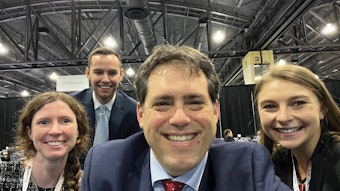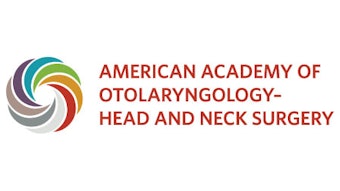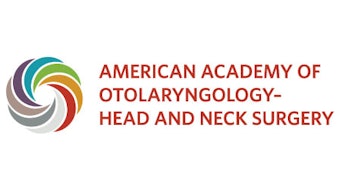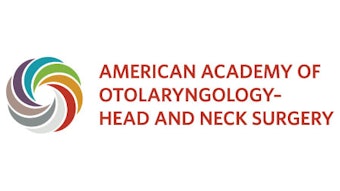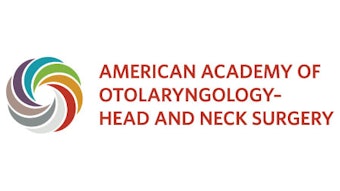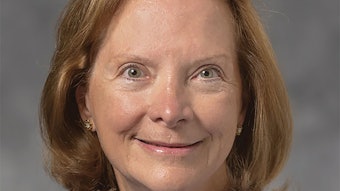Taking up the Mantle of Journal Leadership: An Interview with Cecelia E. Schmalbach, MD, MSc
Throughout my military service, I loved building and being part of a team, and my success as an Editor will rely upon my ability to build, empower, and learn from a strong team.
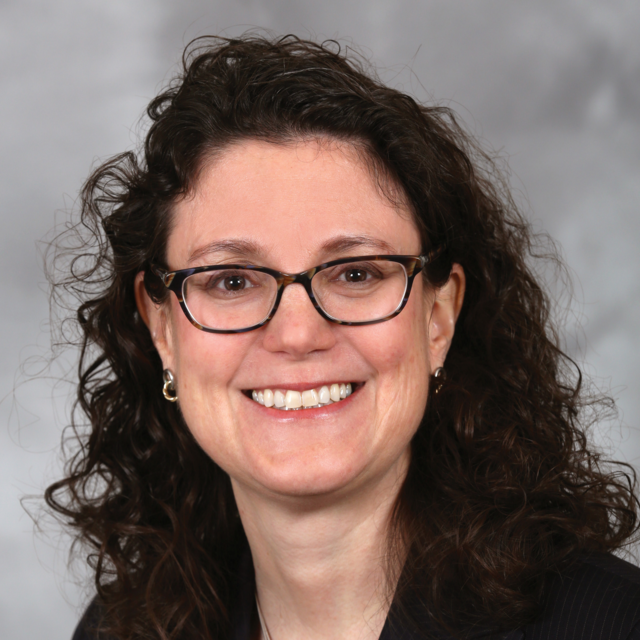 Cecelia E. Schmalbach, MD, MSc"I am driven by service. I knew I wanted to serve my country [in the military] even before I knew I wanted to go into medicine,” said Cecelia E. Schmalbach, MD, MSc. “And when the Editor in Chief position opened, I saw it as a wonderful opportunity to serve the Academy and our community of otolaryngologists and patients.” She was a commissioned officer in the U.S. Air Force, Medical Corps for 19 years, ultimately reaching the rank of lieutenant colonel.
Cecelia E. Schmalbach, MD, MSc"I am driven by service. I knew I wanted to serve my country [in the military] even before I knew I wanted to go into medicine,” said Cecelia E. Schmalbach, MD, MSc. “And when the Editor in Chief position opened, I saw it as a wonderful opportunity to serve the Academy and our community of otolaryngologists and patients.” She was a commissioned officer in the U.S. Air Force, Medical Corps for 19 years, ultimately reaching the rank of lieutenant colonel.
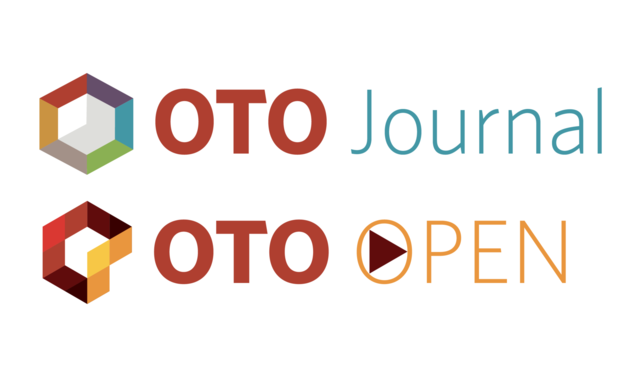 On October 1, 2022, Dr. Schmalbach took over as Editor in Chief of Otolaryngology–Head and Neck Surgery and OTO Open from John H. Krouse, MD, PhD, MBA, who served as Editor for eight years. “Throughout my military service, I loved building and being part of a team, and my success as an Editor will rely upon my ability to build, empower, and learn from a strong team. I always knew that I would come back to academic medicine after my eight years of [active duty] military obligation, and you need to stay connected within academic otolaryngology. The Academy was my natural lifeline.
On October 1, 2022, Dr. Schmalbach took over as Editor in Chief of Otolaryngology–Head and Neck Surgery and OTO Open from John H. Krouse, MD, PhD, MBA, who served as Editor for eight years. “Throughout my military service, I loved building and being part of a team, and my success as an Editor will rely upon my ability to build, empower, and learn from a strong team. I always knew that I would come back to academic medicine after my eight years of [active duty] military obligation, and you need to stay connected within academic otolaryngology. The Academy was my natural lifeline.
“I have been an Academy member now for 21 years. I started as a reviewer, then a Star Reviewer, Editorial Board Member, Associate Editor, and it was a real privilege when Dr. Krouse asked me to be the first Deputy Editor for the journal. That ability to progress upward with the tools and experience to be a successful Editor stemmed from invaluable mentorship and wanting to give back to the Academy.”
When Dr. Schmalbach was beginning her own career in peer reviewing, there was no official training available. Years later, in 2015, she collaborated with Dr. Krouse and initiated the first Resident Reviewer Development Program for otolaryngology, which became a two-year process and a model for other journals. “What was exciting was when graduates [of the program] became attending otolaryngologists, more than one quarter of them immediately became Star Reviewers; to do that in your first year is amazing.
“One of the things I am most proud about the journal is our ability to disseminate evidence-based medical information in a timely fashion. If you look back during COVID-19, it was clear that the journal was the platform for otolaryngologists, and credit certainly goes to Dr. Krouse as Editor for ensuring that there was immediate yet still peer-reviewed release of information so that all providers—nurse practitioners, physician assistants, residents, attending physicians, etc.—could, to the best of their abilities, ensure that they were giving quality otolaryngology care in a safe manner during this unprecedented pandemic.”
Dr. Schmalbach said that the best way to make sure Otolaryngology–Head and Neck Surgery and OTO Open are achieving that level of quality and service is to reference the industry’s Journal Impact FactorTM (JIF) rating, given each year by ClarivateTM, a global leader in providing transparent, publisher-neutral data and statistics in the areas of life sciences and healthcare, academia, government, and more. The JIF is a publishing standard of a journal’s influence and one determinant that authors use when deciding where to submit their research.
In the 2021 Journal Citation Reports, Otolaryngology–Head and Neck Surgery achieved the highest JIF in its history, 5.591, a significant increase from the 2020 JIF of 3.497. The journal jumped in rankings as well—now third out of 43 journals in the “Otorhinolaryngology” category and 22nd out of 211 journals in the “Surgery” category. “That tells me that we are achieving our mission and publishing the relevant information that providers want and need to have in hand to provide the best care,” she said.
When asked about her overall vision for the future of the journals, Dr. Schmalbach hopes to “springboard” off the solid foundation that Dr. Krouse has built over the past eight years. Another determinant that researchers and authors use when deciding where to submit their articles is a journal’s peer review process and how long it takes to get an article accepted, or rejected, for publication. She explained that the Academy journals have a very timely, yet thoughtful, average turnaround time of 25.1 days, which is attractive to authors and something she looks to continue.
“To me, it’s about building a team that speaks to the strengths of our field and tapping the leadership and expertise of everyone in their subspecialties.” A Master of Science in Clinical Research Design and Statistical Analysis from the University of Michigan School of Public Health and experience as former AAO-HNSF Coordinator for Research and Quality have helped Dr. Schmalbach better understand the Academy, she said, and work with all aspects of its members and committees—from private practice and academia to the Patient Safety and Quality Improvement Committee, the Outcomes Research and Evidence-based Medicine Committee, and the Physician Payment Policy (3P) workgroup.
“I am excited to be able to continue to draw on those experts to grow our Editorial Board. The strength of our journal is our Clinical Practice Guidelines (CPGs),” she continued. “These tend to be our highest cited articles thanks to the leadership of Dr. Richard Rosenfeld and the Guideline Task Force.” She said that CPGs are important not only to otolaryngology providers but also to other subspecialties as well as patients. “When you look at where healthcare is going in 2022, there’s so much emphasis on healthcare economics and the business of medicine, and, again, we want to continue to expand that platform to make sure we are providing quality science to our providers. I also envision focusing on the important topics of diversity, inclusion, and equity by utilizing special editions within the journal.”
Dr. Schmalbach went on to describe another way of moving Otolaryngology–Head and Neck Surgery forward is expanding its digital presence, including the use of social media as a means of information distribution and amplifying research emerging from the journal. “We are also about to launch our first visual abstract, and I look forward to the day when we can offer video abstracts. This is where journals are heading, and we know that someday they will be 100% digital.”
To help keep the journals relevant, attractive, and impactful, Dr. Schmalbach said that measurements such as bibliometrics and altmetrics will likely become just as useful and even more timely as Impact Factors. Altmetrics are metrics and qualitative data that are complementary to traditional, citation-based metrics and can include things like citations on Wikipedia and in public policy documents, meeting presentations, research blog discussions, Twitter mentions, mainstream media coverage, and more.
Taking advantage of new measurements like these, she said, will ultimately help position the AAO-HNS/F to better meet the needs of current and future readers as well as its current and future leaders. “I look forward to working with and learning from our residents and fellows in the Young Physicians Section because I think that’s a great way to engage them, mentor them, and bring them onto the journal because they are the future of the journal.”



